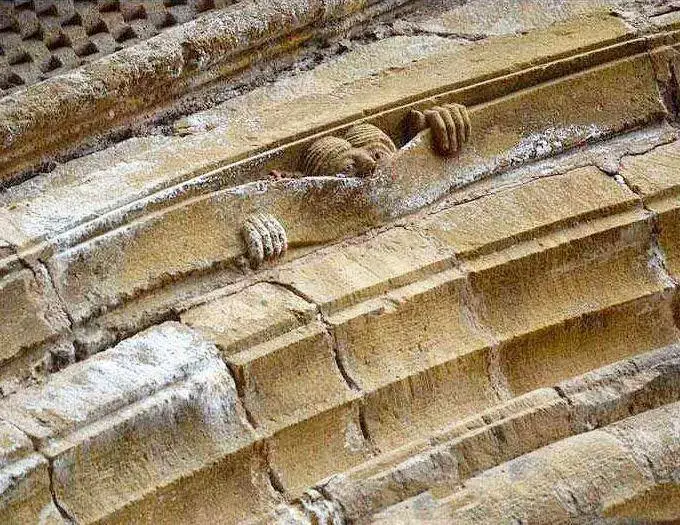Introduction: At the Abbey of Sainte Foy in Conques, France, a unique piece of masonry captures the essence of medieval humor. Dating back to circa 1050 AD, this remarkable work reflects the lighter side of the otherwise solemn and spiritual atmosphere typically associated with medieval religious architecture.
Historical Context: The Abbey of Sainte Foy, renowned for its Romanesque architecture, was an important stop for pilgrims on their way to Santiago de Compostela. Built in the 11th century, it houses the relics of Sainte Foy and is adorned with exquisite carvings and sculptures.

The Mason’s Humor: The masonry in question showcases a delightful sense of humor, unusual for its time. It’s a rare example of how artisans of the medieval period expressed themselves creatively, injecting a sense of personality and whimsy into their work.

Architectural Significance: This humorous masonry not only adds a unique charm to the Abbey but also serves as an important reminder of the human aspect behind these grand structures. It reflects the mason’s skill and the cultural context in which the Abbey was built.
Preservation of the Work: Over the centuries, the Abbey and its artistic works have been carefully preserved, allowing visitors to appreciate this humorous piece in its original setting. The preservation efforts underscore the importance of safeguarding cultural heritage.
Cultural Impact: The presence of humor in such a sacred space challenges our perceptions of medieval society and its approach to spirituality and art. It provides a more nuanced understanding of the era, highlighting the diversity of expression in medieval art.

Conclusion: The whimsical masonry of the Abbey of Sainte Foy stands as a testament to the medieval mason’s sense of humor and artistry. It reminds us that historical architecture is not just about grandeur and solemnity but also about the personal touches that make each piece unique.

